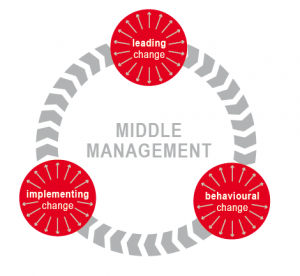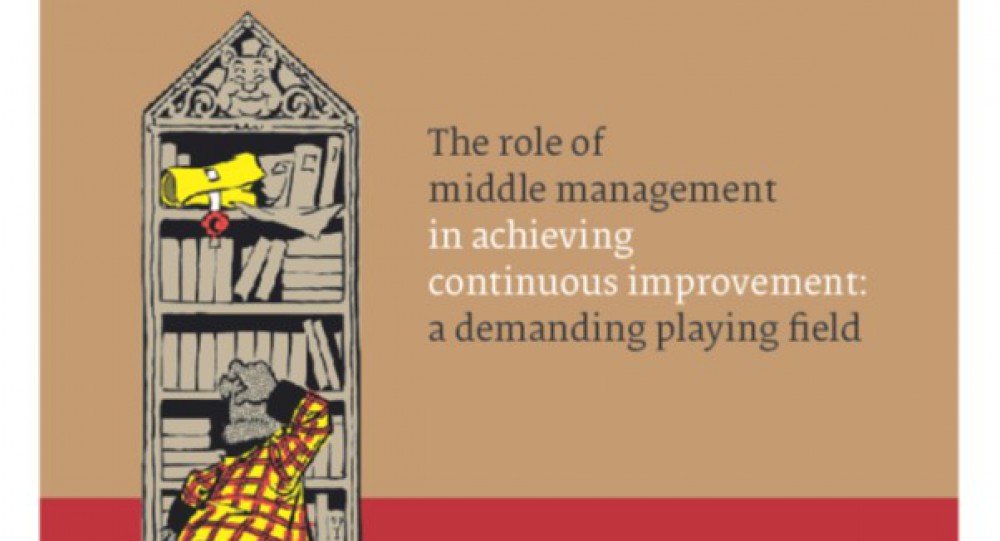Organizational change is complex and highly context dependent. Therefore, there is a strong need for studies that provide insight into the complexity of organizational change, and particularly the management and leadership of change (Higgs & Rowland 2005; Pettigrew et al. 2001) In this respect, many studies of middle management’s role in strategic and organizational change have been performed. At the same time, much research has been done on lean management and continuous improvement practices. However, the role and influence of middle management in the latter practices is under-researched. This is the reason that I have started a PhD research on:
How and to what extent does middle management influence continuous improvement of organizations in the financial service industry?
Some first results are:
The function and position of middle managers is a very difficult one, between operational and upper management and between operations and strategy.
A major challenge for middle managers is dealing with the two different roles that senior management typically expects them to play: change leaders and loyal implementers, which some middle managers may perceive as unfair and unrealistic (Bryant & Stensaker 2011). These dual roles and contributions expected from middle management are particularly problematic when (part of) the middle management echelon is also subject to change

Figure: The Bermuda triangle of middle management
Drawing on an analogy with baseball, middle managers are typically expected to be able to hit, field and pitch at the same time (Uyterhoeven 1989).
Creating a sustainable practice of continuous improvement (CI) has been an enormous challenge within many organizations. Creating a sustainable CI practice requires creating a new way of working (i.e. continuously improving operational processes) and embedding it as a durable activity in the daily routines of the organization. Middle managers can be considered to be key agents in facilitating this kind of change and help striking a balance between continuity and change. However middle managers encounter the triangle of leading change, implementing change and changing their own behavior, which gives rise to tension and possibly the tendency to actively block change and create resistance. To deal with this triangle of roles and challenges, top management has to actively support middle management and lead by example, which is a major challenge in many corporations, in view of the volatility at top management positions, shareholder pressure, and so forth.
Literature
Bryant, M & Stensaker, I. 2011, “The Competing Roles of Middle Management: Negotiated Order in the Context of Change”, Journal of Change Management, vol. 11, no. 3, pp. 353-373.
Higgs, M. & Rowland, D. 2005, “All changes great and small: Exploring approaches to change and its leadership”, Journal of Change Management, vol. 5, no. 2, pp. 121-151.
Pettigrew, A.M., Woodman, R.W. & Cameron, K.S. 2001, “Studying Organizational Change and Development: Challenges for Future Research”, Academy of Management Journal, vol. 44, no. 4, pp. 697-713.
Uyterhoeven, H. 1989, “General Managers in the Middle”, Harvard Business Review, vol. 67, no. 5, pp. 136-145.
